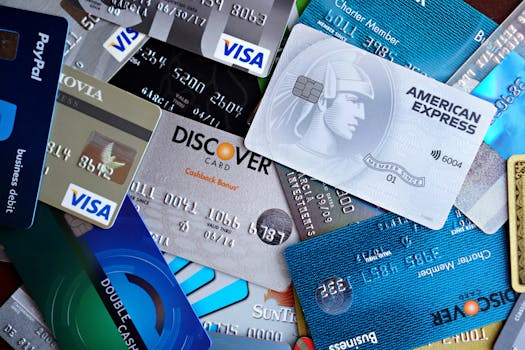Personal Finance
Essential Insurance USA: When Auto, Health, Renters, and Life Really Matter
Discover the essentials of auto, health, renters, and life insurance in the USA. Real scenarios, checklists, and expert tips to get the right coverage—explained in a clear, friendly style.
Advertisement
Accidents happen when least expected. This is why exploring essential insurance USA can help you stay prepared before any situation forces your hand. Let’s examine what protection actually delivers.
Most people underestimate the cost of medical bills, auto collisions, or sudden home losses until it’s too late. Insurance turns surprise expenses into predictable ones, making budgets more manageable and life less stressful.
If you’ve hesitated or felt unsure where to start, this deep dive into essential insurance USA will give you real-life examples, clear rules, and smarter checklists for every major type. Let’s dive in.
Deciding Which Essential Coverage Meets Your Real Risks
The right essential insurance USA doesn’t mean duplicating every policy your neighbor owns. Instead, match protection to your lifestyle and needs, taking one step at a time for targeted coverage.
Begin by writing down the top three things that would disrupt your daily life if lost or damaged—these become your coverage priorities. Essential insurance USA can deliver next-day peace of mind.
Setting Your Baseline: Non-Negotiables for Most Adults
If you drive, auto insurance is non-negotiable. Tracing regional requirements, most states in the USA legally mandate liability coverage under essential insurance USA laws.
For renters, coverage can seem optional until a neighbor’s pipe bursts or a burglary happens nearby. Predicting these risks keeps renters insurance on the essential insurance USA shortlist.
Health and life insurance become crucial as families grow or dependents rely on your income. A short checklist helps: car, health, home (owned or rented), and income support equal your starting point.
Scenario: New Graduate Moving to a City for Work
Julia just moved to Chicago for her job. She asks herself, “What essential insurance USA do I need now?” First, she can’t drive uninsured.
She next considers renters insurance, since her belongings equal six months of savings. A slip on icy sidewalks makes her investigate health coverage—one unexpected ER trip would otherwise upend her finances.
Julia copies this script: “Auto, health, and renters insurance go into my budget because losing any one would quickly make my new start impossible.” Adapt this tactic as your situation changes.
| Insurance Type | Who Needs It Most | Main Benefit | What to Do Next |
|---|---|---|---|
| Auto | Anyone with a car | Pays for damages and injuries after accidents | Check state minimums and enhance coverage for peace of mind |
| Health | All ages, all backgrounds | Covers costly medical bills, preventive care, prescriptions | Review employer or marketplace options for best fit |
| Renters | Apartment or home renters | Protects belongings and liability for accidents | Inventory valuables and compare policy limits |
| Life | Parents, caregivers, partners | Supports loved ones if you’re gone | Calculate income needs and explore term life quotes |
| Disability | Workers relying on steady paychecks | Replaces income if illness or injury prevents work | Check existing benefits and fill gaps with personal policy |
Customizing Auto, Health, Renters, and Life Policies For Everyday Use
Building essential insurance USA coverage requires matching policies to your habits and risks rather than picking random plans off a list.
Separate auto, health, renters, and life insurance into their core functions—commuting, medical visits, home protection, and long-term financial planning. This prevents overlap and catches gaps.
Narrow Down Options: Health and Auto
Start by choosing coverage for what you do every day. For cars, pick a deductible you can actually pay out-of-pocket if an accident happens.
Health insurance should cover your local providers and any prescriptions you take. Search for plans including telehealth if you want more flexibility.
- Pick an auto deductible you can cover today: avoids surprises when filing a claim and keeps monthly costs reasonable.
- Confirm health network covers your doctors: saves time and money on out-of-network costs—ask for a provider directory from each insurer.
- Match renters insurance to your apartment size, and inventory items to adjust personal property limits realistically.
- For life insurance, calculate how many years’ income family would need—then shop term life for that length.
- If you work for yourself, choose policies that allow flexible updates—self-employed plans offer seasonal adjustments.
Only add riders or extra features after your basics are strong; otherwise, costs pile up without added protection. Essential insurance USA is about the gaps first.
Evaluating Renters and Life Coverage Details
Renters insurance isn’t just for physical items—a good policy covers the cost of relocating temporarily after a fire or disaster.
For life insurance, focus on term policies if you want affordable, straightforward protection for your dependents. Whole life adds investment, but it’s unnecessary for most starting out.
- Document belongings with photos for easy claims—during or after an emergency, proving value speeds up recovery and peaceful nights.
- List trusted contacts on life policies and communicate details to your executor. Secure accounts with up-to-date passwords and key documents in one place.
- Revisit policy coverage each year. If you move, switch jobs, or add family members, update beneficiary info and coverage limits.
- Don’t overlook loss-of-use coverage: If displaced after a disaster, coverage pays hotel costs. Essential insurance USA policies almost always offer this as an add-on.
- Explore life insurance conversion options only if you outgrow your policy or need more flexible financial strategies over time.
It pays to keep policies simple and responsive. Every time a life milestone hits, assess your essential insurance USA to maintain fit as needs shift.
Using Checklists and Mini-Scripts to Avoid Common Insurance Gaps
Working with a detailed checklist prevents missing out on essential insurance USA coverage—especially as your life changes. This hands-on approach makes tracking policies much easier.
Mini-scripts save you time when calling insurers, clarifying what you need or asking about exclusions before you commit to anything new.
Coverage Audit Walkthrough
On your birthday each year, review one insurance area per week. Start with auto. Are all drivers in your household named? Have any vehicles changed?
Switch next to health coverage. Compare the plan summary’s annual out-of-pocket maximum against your emergency funds—adjust upward if your savings have grown.
Third week, open renters or homeowners docs and list valuable items acquired this year. Final week, check life insurance beneficiaries and policy terms—especially after marriage, a birth, or a move.
Sample Script For Updating a Policy
“Hi, I want to check if my essential insurance USA policies still fit my household. Can you review coverage, explain gaps, and send me a summary of options?”
Ask about common gaps: “Is flood, earthquake, or personal property replacement included?” Confirm next steps, like what paperwork or verifications are needed, and note all deadlines.
Leave a scheduled reminder to repeat this script every year—this boosts confidence that your essential insurance USA really protects what matters most as your life changes.
Quick Comparisons: Policy Benefits, Costs, and What’s Worth It
Side-by-side comparisons clarify where essential insurance USA delivers best value—and when to skip extra features that only inflate costs.
Use category columns to see each policy type’s upside, required costs, and must-have features for your situation. Essential insurance USA policies aren’t one-size-fits-all, so reflect on what you’ll actually use.
| Policy Type | Key Feature | Monthly Cost Range | Who Should Prioritize |
|---|---|---|---|
| Auto | Collision & injury coverage | $60–150 | Car owners & frequent drivers |
| Health | Preventive care, ER | $250–900 (marketplace) | Everyone for medical security |
| Renters | Personal property & liability | $10–30 | Apartment/home renters |
| Life | Income replacement | $20–60 (term, age-based) | Anyone with dependents |
| Disability | Salary coverage | $30–80 | Self-employed or primary earners |
Examples from Real Life: Coping With Claims and Support Calls
Claims and support calls often cause nerves, but knowing exactly what to expect speeds relief and resolution. Essential insurance USA policies each have a unique filing process—here’s what works.
Making a Car Accident Claim
After a fender-bender, pull over and ensure everyone is safe. Exchange info and photos. Call your insurance company immediately, describing the situation using your essential insurance USA policy number.
Upload photos and written notes as requested. Stay calm, use precise language, and ask the representative: “What’s the next step?” This script avoids delays or confusion.
Track the claim reference number and set calendar reminders for follow-ups. Save all communications. This direct process makes essential insurance USA protection more reliable.
Getting Renters Insurance After a Fire
After a kitchen fire, gather your household members outside in a safe location. Document visible damage with your phone, narrating what happened for easy recall later.
Call your renters insurer to report the incident. Use statements like, “I’m safe, but there’s damaged property and I need alternate housing.” Insist on a written confirmation of next actions.
Provide a written inventory and receipts for lost items as soon as possible. Essential insurance USA agents will guide you through temporary housing and reimbursement steps, so follow up consistently by phone or email.
Identifying Red Flags: When Insurance Might Not Be Worth It
Sometimes, an insurance type or upgrade doesn’t suit your life. Essential insurance USA should be practical—not a burden or a confusing maze of unnecessary extras.
If premiums keep rising but coverage lags behind new risks or offers, press pause. Essential insurance USA isn’t worth it if it drains your budget without giving tangible protection.
Spot Unnecessary Add-Ons and Upsells
Vendor pressure can cloud judgment. If an agent says “everyone needs this upgrade” but it doesn’t match your risk profile, say no.
Only add endorsements for high-value items in your home or unique health risks confirmed by a doctor. Essential insurance USA should work for you, not the salesperson.
Check your deductibles—if raising them saves just a few dollars on premiums, but you can’t cover the new amount out-of-pocket, stick with a reasonable, more manageable number.
- Avoid duplicate coverage—never pay twice for the same risk, such as rental car insurance if your auto policy already covers it.
- Skip travel medical insurance if your regular health plan covers emergencies out-of-state or abroad—read the fine print to confirm.
- Resist offers to buy identity theft coverage if your bank or current insurance already provides this as a free benefit.
- Be wary of very-low-cost life insurance plans promoted at cash registers—they rarely offer sufficient real protection for loved ones.
- If insurance is based on fictional scenarios you don’t face, politely decline and ask for a customized quote based on actual living circumstances.
Ensuring Your Policies Stay Updated As Life Changes
Major events—graduation, moving, new jobs, marriage, or kids—require immediate essential insurance USA updates to avoid gaps. Mark your calendar for insurance “spring cleaning” every year.
If you get a raise, boost life or disability coverage to match new financial needs. Don’t wait for a claim to realize you’re underinsured or missing paperwork.
Sample Life Update Sequence: Moving To a New State
After landing a job in another state, update your address with each insurer. Review state minimum auto coverage and compare rental insurance policies in your new city.
Inform health providers and find in-network options before your first medical visit. Update your beneficiaries and store policy numbers in a shared digital file so trusted family members can access them.
If you add a new household member or buy a car, update all contact info and policy terms the same day. This proactive move keeps your essential insurance USA set current and complete.
- Connect with local agents to review state-specific requirements for auto and renters insurance. This ensures compliance and avoids legal surprises in your new location.
- Organize policy docs digitally with cloud backup access—critical for fast claims during emergencies like natural disasters or theft.
- Use a password manager for secure, quick access to policy numbers and contacts while traveling or if documents get lost.
- Keep a hard copy of policy declarations in an emergency folder at home—use brightly colored paper for easy spotting when rushing out the door.
- After marriage or a birth, make next-day life insurance beneficiary updates to prevent delays in accessing support for dependents.
Final Thoughts on Making Essential Insurance USA Work For You
Choosing and maintaining essential insurance USA is all about picking what fits real risks, then checking and adjusting each year as your needs grow and shift.
Proactive checklists, clear scripts, and concrete comparisons prevent wasted money while keeping you protected against the unpredictable. Don’t let paperwork pile up—schedule check-ins alongside birthdays or tax prep days.
Your effort now secures peace of mind when surprises arise. Take one action this week: audit, update, or start a new policy—essential insurance USA becomes simpler every time you make it your own.





